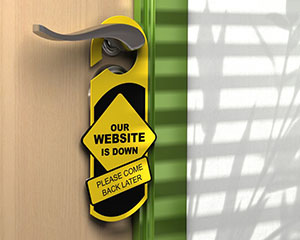Recently T324 owner David Daniels gave a Learning Lunch (link is external), “What I Wish I’d Known Before I Built My Website”, at the Berkeley Chamber of Commerce (link is external). 
Last week we talked about the round robin opening and typical concerns that business owners raised, and addressed the question of "How do I pick a web designer/developer/person/company who'll build my site?"
One of the most important steps in choosing a developer is knowing your needs, because the functions you want your website to have will drive your choice.
Do they have the skills to incorporate those functions into a design? Beware of designers who aren't technology-savvy. You have only a few seconds to make a first impression with your site, and if anything is not displaying properly or not responding properly on your home page, that first impression is negative.
 Once you've chosen someone to build your site, you need to decide what they're going to build it on.
Once you've chosen someone to build your site, you need to decide what they're going to build it on.
Although ten years ago pretty much all sites were hand-coded, these days they're generally built on and with a Content Management System or CMS. Again, your needs for the site will drive this- does the CMS support the functions you need?
Using a modern CMS offers enormous advantages to the business owner commissioning the site, in that their organizational structure and user-friendly interfaces allow the site owners to make their own updates easily.
Just how easily depends on the CMS - and not surprisingly, the easiest CMS to use doesn't offer as complex a functionality. However, any good CMS lets you enter your latest business content without worrying about design- it keeps your content clean and organized.
Your CMS can pipe your content into your social media streams automatically, updating your Twitter, Facebook, LinkedIn and Pinterest, saving you a lot of time and money.
Or you can feed your blog or Facebook page to a module on your site that updates in realtime.
Your developer may have a preferred CMS; the most popular are WordPress (link is external), Drupal (link is external) and Joomla (link is external), all of which are free and open source (link is external).
Here's what David says: "Designers who don't know what they're doing use WordPress, designers who know what they're doing use Drupal, and designers who think they know what they're doing use Joomla."
With open source code, the size and quality of the developer community is an enormous factor in the availability of functions. Store manager Brian Nowell recently completed a Drupal project where some of the tools and coding techniques he used were being released just days before he implemented them.
The White House website is built on Drupal, and White House developers regularly contribute to the Drupal open source community. Drupal has over 20,000 free community-contributed add-ons, called contrib modules, which extend Drupal's basic capabilities, add features and customize Drupal's behavior and appearance. The modules are interactive, not isolated from each other. Because of this extensibility, Drupal is considered a Content Management Framework.
In the old, "flat" html, websites were merely a collection of individual pages, with no centralized interface for updating those pages.
Code chunks like headers, footers and sidebars were repeated on each page. In a CMS, contextual links make editing content easy, with WYSIWIG controls; you update a section once and have your changes take place in multiple locations on your site. Changed your company tagline that appears on every page of your site? No problem.
If you want to show a lot of images on your site, Drupal gallery features let you upload pictures with a mouseclick; the system resizes images and creates thumbnails. Cropping can be done right in the interface; no Photoshop or coding required. And forms allow your customers to sign up for newsletters or email estimates, with the submissions archived rather than simply being emails sent to an address.
Drupal has a more extensive functionality for interactive registration actions like forms than WordPress, which was really designed as a blogging platform.
But Wordpress can do plenty, and it's very user-friendly - there's a reason WordPress.com users produce about 39.3 million new posts and 42.7 million new comments each month (link is external), as of this writing. If you plan to use your site mostly yourself, without other staff members needing to access it, and don't have a lot of customer interactivity needs, you might find WordPress does everything you want.
What about Joomla, you say? My designer looooves Joomla!! She says it's so great! Well, that's fine. That's a little bit Naughties/Oughties of her, but have fun!
Next week, we'll talk about SEO, that sweet internet voodoo juice that makes your site visible to the world. Or used to, anyway.
Part 4 of this series.
Suzanne on Google plus (link is external)


